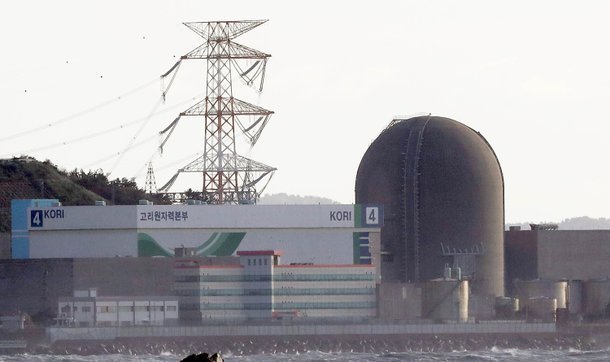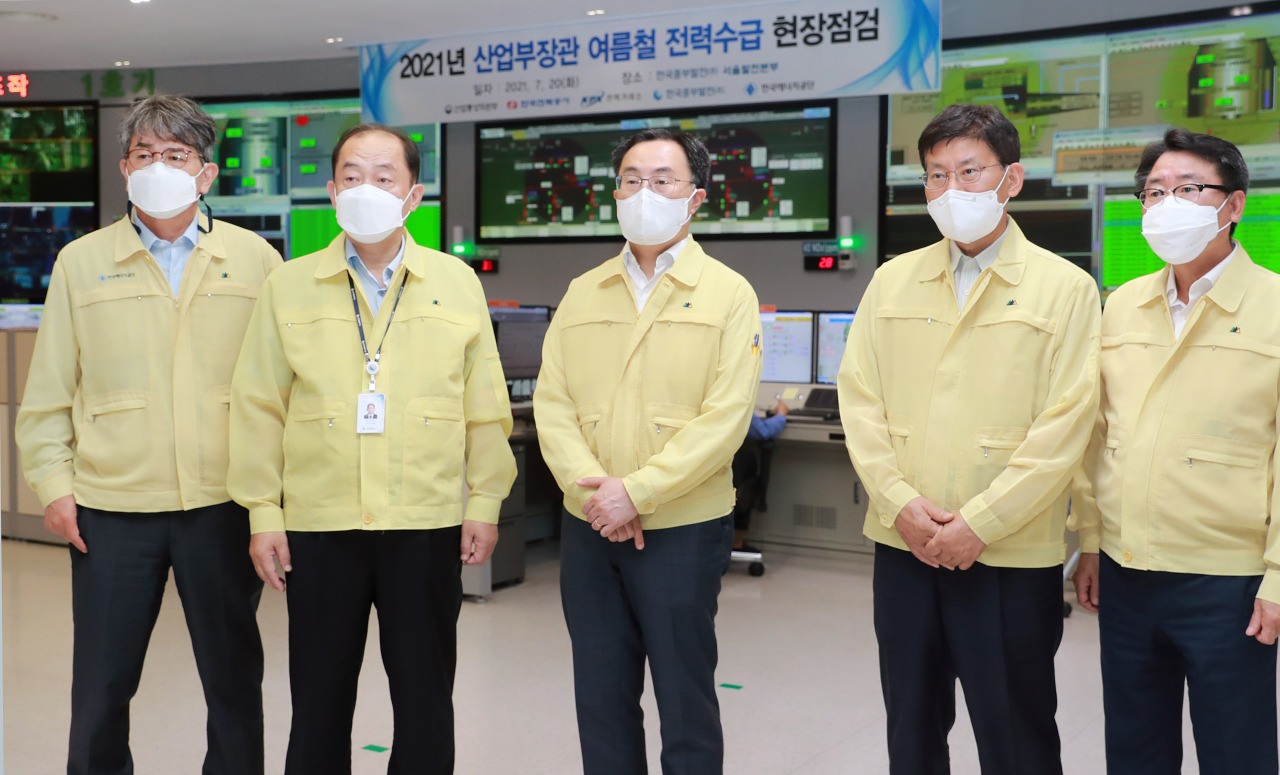Korea goes all-out to prevent power outages
Korea resumes early operations of 3 nuclear reactors to increase power supply due to sweltering heat
By Kang Jae-eunPublished : July 20, 2021 - 14:47

South Korea is making all-out efforts to ensure a stable supply of electricity as the nation’s power reserve is expected to plummet to its lowest level this week, amid a record-breaking heat wave and surge in electricity consumption, government officials said Tuesday.
To prevent possible power shortages, the Ministry of Trade, Industry and Energy said it will resume operations of three nuclear reactors along the southeastern coast within this month. The reactors were stopped for maintenance work. The resumption schedule has been moved forward by one week due to the current power consumption situation with sweltering temperatures.
If the nuclear reactors go back online as planned, the county‘s total electricity supply is expected to increase by 3,100 megawatts. One existing nuclear reactor will be paused for maintenance on Wednesday, bringing the actual amount of added electricity supply to 2,150 MW for the fourth week of July.
“In line with required procedures and safety standards, the government has accelerated the maintenance of those nuclear power plants in order to help contribute to a stable power supply this summer,” the ministry said.
To make sure power plants are prepared for any problems, Minister of Trade, Industry and Energy Moon Sung-wook made a visit to Korea Midland Power, the nation’s largest electricity-generating facility, Tuesday.

“The government has maintained electricity supply at a similar level as previous years, however, demands can surge at any moment from the continued heat waves,” said the minister during his visit to the facility. “I urge all relevant institutions to take the matter seriously and focus their efforts in ensuring stable energy supply.”
The Energy Ministry is moving to implement stronger measures to increase power supply while cutting demand, as temperatures this week are expected to reach 36 degrees Celsius, fueling concerns over possible blackouts.
To increase supply, the government will discharge energy generated from solar panels earlier in the day, allowing it to respond effectively during the afternoon hours when energy demand peaks.
Efforts to cut demand are also underway. The ministry recently made a rare request to public institutions to strictly reduce power usage throughout next month.
All government ministries and public institutions have been advised to stop or refrain from using air conditioning during the peak hours of 2 p.m. to 5 p.m. Indoor temperatures will be kept higher, at 26 degrees Celsius, according to the Energy Ministry.
It marks the first time in years that the government has made such a request of government agencies, as well as state organizations and companies, according to the ministry.
Alongside all the efforts, government officials are still keeping a close watch on possible changes in the supply and demand situation.
The total power supply capacity for this week is 97.2 gigawatts. The figure is similar to the same period in previous years -- 98 GW in 2020 and 99.5 GW in 2018.
Peak power demand for the week, however, is expected to reach 93.2 GW, much higher than the previous years -- 89.1GW in 2020 and 92.5 GW in 2018.
The Energy Ministry has projected the nation’s total electricity demand to run as high as 94 GW in the last week of July, which might bring the reserve margin rate down to an alarming 4.2 percent, or a reserve capacity of 4 GW, the lowest level.


![[Exclusive] Korean military set to ban iPhones over 'security' concerns](http://res.heraldm.com/phpwas/restmb_idxmake.php?idx=644&simg=/content/image/2024/04/23/20240423050599_0.jpg&u=20240423183955)




![[Herald Interview] 'Amid aging population, Korea to invite more young professionals from overseas'](http://res.heraldm.com/phpwas/restmb_idxmake.php?idx=644&simg=/content/image/2024/04/24/20240424050844_0.jpg&u=20240424200058)

![[Pressure points] Leggings in public: Fashion statement or social faux pas?](http://res.heraldm.com/phpwas/restmb_idxmake.php?idx=644&simg=/content/image/2024/04/23/20240423050669_0.jpg&u=)








